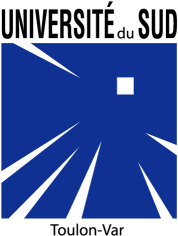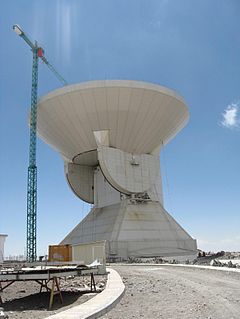
The École centrale de Lyon (ECL) is a research university in greater Lyon, France. Founded in 1857 by François Barthélemy Arlès-Dufour in response to the increasing industrialization of France, it is one of the oldest graduate schools in France. The university is part of the Grandes Écoles, a prestigious group of French institutions dedicated to engineering, scientific research, and business education. The current 45-acre campus opened in 1967 and is located in the city of Ecully.

The National Autonomous University of Mexico is a public research university in Mexico. It ranks highly in world rankings based on the university's extensive research and innovation. UNAM's campus is a UNESCO World Heritage site that was designed by some of Mexico's best-known architects of the 20th century. Murals in the main campus were painted by some of the most recognized artists in Mexican history, such as Diego Rivera and David Alfaro Siqueiros. In 2016, it had an acceptance rate of only 8%. UNAM generates a number of strong research publications and patents in diverse areas, such as robotics, computer science, mathematics, physics, human-computer interaction, history, philosophy, among others. All Mexican Nobel laureates are either alumni or faculty of UNAM.

The Technion – Israel Institute of Technology is a public research university in Haifa, Israel. Established in 1912 during the Ottoman Empire and more than 35 years before the State of Israel, the Technion is the oldest university in the country and is ranked the best university in Israel and in the whole of the Middle East in the Shanghai Ranking. The university offers degrees in science and engineering, and related fields such as architecture, medicine, industrial management and education. It has 19 academic departments, 60 research centers and 12 affiliated teaching hospitals. Since its founding, it has awarded more than 100,000 degrees and its graduates are cited for providing the skills and education behind the creation and protection of the State of Israel.
Engineering management is the application of the practice of management to the practice of engineering.

Holon Institute of Technology (HIT), is an academic institution of higher education in Holon, Israel. It is a multidisciplinary institution that focuses on Design & Visual Art, and Engineering & Technology, and offers diverse programs that enhance interdisciplinary approach towards art and technology. The programs range from Industrial Design to Visual Communication Design, to various specializations in Engineering and Technology. HIT conducts both theoretical and applied research; it has been active in the local and international art & design scenes and has maintained strong ties with the industry in Israel and abroad.
The Instituto Tecnológico Autónomo de México, commonly known as ITAM, is a private Ph.D.-granting research university. It is one of Mexico’s most important institutions of higher learning; the best undergraduate Accounting, Business, Economics, International Relations, Law, and Political Science school in Mexico; and the best business school in Latin America. Also, it is considered one of Mexico's think tanks and has the highest rank of admission to the Mexican Foreign Service.

The Fu Foundation School of Engineering and Applied Science is the engineering and applied science school of Columbia University. It was founded as the School of Mines in 1863 and then the School of Mines, Engineering and Chemistry before becoming the School of Engineering and Applied Science. On October 1, 1997, the school was renamed in honor of Chinese businessman Z.Y. Fu, who had donated $26 million to the school.

The Grenoble Institute of Technology is a French technological university system consisting of six engineering schools.

Universidad de las Américas Puebla, is a Mexican private university located in San Andrés Cholula, near Puebla. The university is known for its programs in Arts and Humanities, Social sciences, Science and Engineering, and Business and Economics. It is considered to be one of the most prestigious universities in Latin America, having been ranked the best private and single-campus university in Mexico by the newspaper El Universal, as well as being one of the only seven universities in Latin America accredited by the Southern Association of Colleges and Schools. The UDLAP has also been very successful in Mexican collegiate sports; their teams are the Aztecas.

The Courant Institute of Mathematical Sciences (CIMS) is an independent division of New York University (NYU) under the Faculty of Arts & Science that serves as a center for research and advanced training in computer science and mathematics. It is considered one of the leading and most prestigious mathematics schools and mathematical sciences research centers in the world. It is named after Richard Courant, one of the founders of the Courant Institute and also a mathematics professor at New York University from 1936 to 1972.
The Centro de Investigación en Matemáticas, commonly known by its acronym in Spanish language as CIMAT, is a North American scientific research institution based on the city of Guanajuato, in the homonym State of Guanajuato, in central Mexico, and was established in the year 1980. It belongs to the Mexican National System of Public Centers of Research under administration of the country's National Council of Science and Technology (CONACyT).

The Mexican Academy of Sciences(Academia Mexicana de Ciencias) is a non-profit organization comprising over 1800 distinguished Mexican scientists, attached to various institutions in the country, as well as a number of eminent foreign colleagues, including various Nobel Prize winners. The organization, which encompasses exact and natural sciences as well as the social sciences and humanities, is founded on the belief that education, based on the truth of scientific knowledge, is the only means, in the short and long term, of achieving the development of the Mexican spirit and national sovereignty.

The École nationale supérieure d'informatique et mathématiques appliquées de Grenoble, or Grenoble INP - Ensimag, is a prestigious French Grande École located in Grenoble, France. Ensimag is part of the Institut polytechnique de Grenoble. The school is one of the top French educational institutions and specializes in Computer science, Applied Mathematics and Telecommunications.
The Bobby B. Lyle School of Engineering is the school of engineering at Southern Methodist University in Dallas, Texas. The engineering program has existed at SMU since 1925. Many of the college's degree programs are accredited by ABET. The school is divided into five departments, or areas of study - Civil and Environmental Engineering, Computer Science and Engineering, Electrical Engineering, Engineering Management, Information, and Systems, and Mechanical Engineering. In October 2008, the school was renamed for alumnus and SMU trustee Bobby B. Lyle.
DGSCA, a.k.a. Computo Academico UNAM, previously known as PUC. It is the leading organization within the UNAM for computer technologies systems and held the distinction for being the first institution in México to install and operate a Cray Y-MP super computer, in early 1990.

The University of Toulon is a French university located in Toulon, France and neighboring areas. It was founded in 1968 and is organized in 6 faculties, 2 autonomous institutes, an institute of business management and an engineering school.
The Engineering Institute is the research institute of the UNAM in Mexico City which focuses on engineering-related topics. It operates the postgraduate programs of the Faculty of Engineering (UNAM).

The School of Engineering at the National Autonomous University of Mexico (UNAM) is the most prestigious engineering school in Latin America and one of the top engineering schools worldwide. At the undergraduate level, it offers thirteen majors and some graduate programs. In fall 2008, the school of engineering had over 10,900 undergraduate students and 1,115 graduate students and postdocs. The School of Engineering offers undergraduate studies in:

The Faculty of Sciences at the National Autonomous University of Mexico (UNAM) is the entity where natural and exact science-based majors are taught. It has both undergraduate and graduate studies, some of the former in joint teaching with other faculties, most commonly the Faculty of Engineering. The Faculty of Sciences is the most important science school in the country by the number of students and the quality of its research. Together with the research institutes that surround it, it is considered one of the biggest research complexes of the UNAM.

The history of science and technology in Mexico spans many years. Ancient Mexican civilizations developed mathematics, astronomy, and calendrics, and solved technological problems of water management for agriculture and flood control in Central Mexico. Following the Spanish conquest in 1521, New Spain was brought into the European sphere of science and technology. The Royal and Pontifical University of Mexico, established in 1551, was a hub of intellectual and religious development in colonial Mexico for over a century. During the Spanish American Enlightenment in Mexico, the colony made considerable progress in science, but following the war of independence and political instability in the early nineteenth century, progress stalled. During late 19th century under the regime of Porfirio Díaz, the process of industrialization began in Mexico. Following the Mexican Revolution, a ten-year civil war, Mexico made significant progress in science and technology. During the 20th century, new universities, such as the National Polytecnical Institute, Monterrey Institute of Technology and research institutes, such as those at the National Autonomous University of Mexico, were established in Mexico.
















